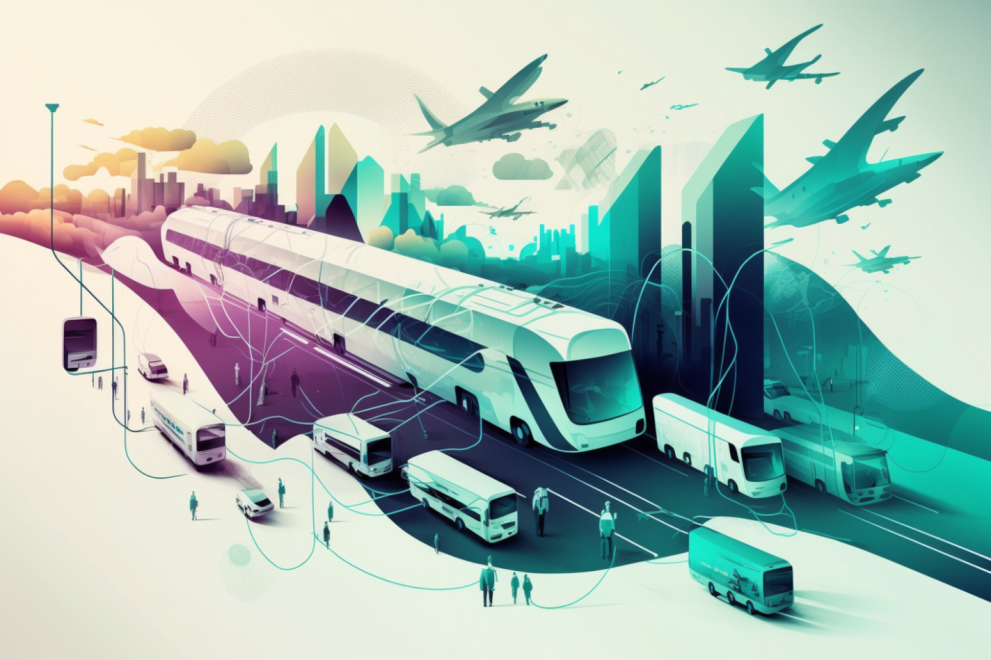
The new JRC report Research and Innovation in Transport Safety and Resilience in Europe, maps European innovation efforts to achieve this goal and identifies the main areas to focus on, such as human factors, cyber security and climate-proof infrastructure.
The study highlights road transport as one of the areas with the most need for progress, due to the high number of avoidable accidents that still occur in Europe. According to the researchers, promoting a safety culture and safeguarding human vigilance and performance, safe infrastructure design and maintenance, automation and assisted driving are some of the interventions that could make our roads safer.
Planes, trains and boats show excellent results with low fatalities but similarly to road transport, digitalisation and automation will help maintain this track record in the future.
The report draws its conclusions from a selection of the most pertinent EU-funded projects, identified through the Transport Research and Innovation Monitoring and Information System (TRIMIS) database. The publication serves as a guide, showcasing how research and innovation are shaping the future of transport safety and resilience in Europe.
Road transport
Research and innovation have been vital in addressing safety challenges across different transport modes. In fact, while the most recent data indicate that more than 20.000 people were killed in road accidents in 2022, the trend has decreased by 10% in relation to 2019. And the total number of fatalities in 2021 was 40% lower than the number of fatalities recorded at the beginning of 21st century.
Of the 143 EU-funded projects selected for the analysis, 48 focus on road transport and the adoption of a safe system approach that combines technological innovations with non-technological measures and behavioural adaptations. Specifically, the areas of interventions identified to reduce the probability of road accidents include infrastructure, with a solid road design and maintenance, and safe vehicle technologies, such as driver assistance systems.
Among the proposed initiatives, the report mentions the use of AI computer vision to detect dangerous traffic situations, alert drivers, and take evasive action. These could help ensure drivers are fit to operate vehicles by detecting any distractions, fatigue, or impairing substances.
All these measures show promise in achieving the goal of getting close to zero deaths and serious injuries on EU roads by 2050. This target is set out in the EU Road Safety Policy Framework 2021-2030 - Next steps towards "Vision Zero” and includes an intermediate target of a 50% reduction by 2030.
Aviation, rail and maritime transport
The report also highlights the remarkable safety record of aviation, rail, and waterborne transport. With zero fatal accidents for EU commercial aircraft since 2016, aviation is setting new standards in safety despite the rise in air traffic. Ongoing efforts in aviation focus on AI-assisted navigation, air traffic management, safety nets, and airport operations to ensure risk-free travel.
Similarly, the railway sector has made significant strides in safety, with a 38% decrease in accidents compared to 2010, primarily by prioritising infrastructure safety and security. For maritime transport, innovative projects are tackling the root causes of incidents, aiming to eliminate human error as a leading factor. Detection and warning systems, as well as smart safety equipment and procedures, are being developed to protect passengers and crew members.
Transport resilience against natural and man-made crises
Crises such as the COVID pandemic and the Russian war in Ukraine highlight both the importance and fragility of transport systems when facing large-scale disruption.
As the EU transport system will be challenged by climate events and other possible natural or man-made disruptions, various policy measures are in place to strengthen its resilience and ensure the continuity of its services, protect passengers and freight and enhance the cybersecurity of transportation networks.
These measures include the completion of the Single European Transport Area, with emphasis on the Trans-European Transport (TEN-T) Network to ensure multimodality and interoperability; and the Contingency Plan for Transport, which provides guidance to Member States in areas like connectivity, passenger protection and efficient border management during times of crisis.
However, resilience is still a major challenge for the EU transport system, considering its complexity and interconnection to address demand, efficiency and sustainability objectives, as well as the potential increase in disruptions. In fact, 50 of the EU-funded projects this report analysed focus on developing advanced monitoring techniques to identify vulnerabilities and facilitate maintenance, detecting and predicting disruptions through ICT and AI technologies, and creating frameworks that take into account factors such as risk assessment, impact analysis and resource allocation to make informed decisions during disruptions.
The research trends the study identifies converge towards operational resilience at the vessel and network levels, developing resilient physical and digital infrastructure, ensuring fleet resilience and addressing critical infrastructure resilience and cybersecurity. Urban mobility resilience is also a critical aspect, necessitating collaboration, knowledge management and monitoring of the entire transport system for real-time information.
The report concludes that several key areas should be considered for future research and policy initiatives, including resilience design and certification to cover structural resilience (e.g. heat-resistant materials); virtual testing to simulate systems’ response to disruptions and measures to preserve and restore operations when experimental study is impractical, and data- and AI-driven resilience monitoring and response.
Two policy briefs complement this report:
- Research and Innovation in Transport Safety in Europe
- Research and Innovation in Transport Resilience in Europe
Details
- Publication date
- 23 October 2023
- Author
- Joint Research Centre
- JRC portfolios



